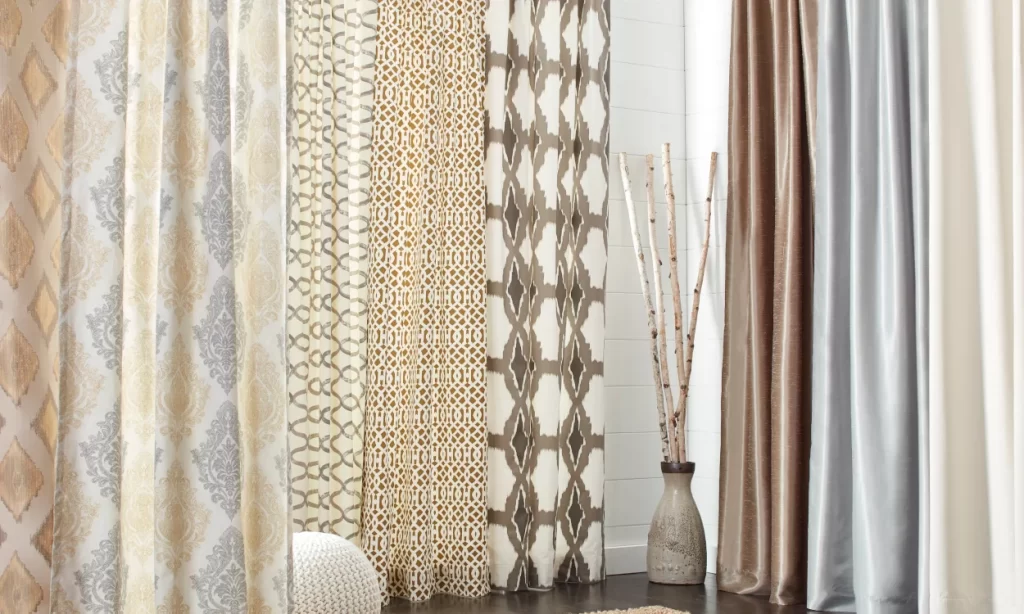Before you start sewing curtains, you must decide on the kind of curtain fabric you want. If you want to create a modern and contemporary curtain, linen is an excellent choice. This material is very sturdy but tends to crease. Linen is usually used for chair slip-covers, but it is sometimes used for curtains as well. It is often used for light upholstery and walling, but it can be stiff enough to ruin a curtain.
Cotton is one of the cheapest and most popular types of fabric for curtains. While you can find many colors, it tends to be quite narrow, so you will need to join the yardage to make a curtain. However, cotton is very popular for kitchen curtains. Checkered cotton, gingham, and other colors are very common, and they are all inexpensive and cheerful. You can even use a blend of two fabrics. The choice is up to you!
Before sewing, you should allow the fabric to settle before you measure the bottom hem. The hem is usually hand sewn to hide the stitching. But, if you want a quick hem, a hem-stitch is a good option. A good tip is to bast the edges before stitching them together. You can use contrasting thread to make the hem look even. Once you’ve stitched the top, the hems can be finished with a bit of ironing.
If you’re planning to use a lining fabric, you should cut the lining fabric smaller than the curtain fabric. Place the lining fabric at the bottom hem, and then cut it three inches shorter than the curtain. Once you’re finished, you should fold the lining down so that the seams meet. Next, you must sew the lining to the curtain. If the lining comes up a little short, you can turn the lining inside out and stitch it to the bottom hem.
The fabric you choose should match the décor of your room. The fabric should be durable and easy to clean. Polyester is a standard curtain material and is cheap and low-maintenance. It is not suitable for use on high ceilings, as it will become a ‘pool of’ fabric and will not hang properly. In addition to polyester, you can also opt for linen. The downside of linen is that it is difficult to wash and requires extra care.
If you’re decorating your home or office, you should choose curtains with a wide variety of fabrics. Sheer curtains offer privacy without blocking out light. They’re best used as an accent over a more opaque window treatment. Sheer curtains can also be used to enhance a feminine interior decor. White eyelet and lace are easy to handle and can be easily sewn into a no-sew hem. For sheer curtains, you can choose lightweight polyester or a blend of both.
There are a variety of curtain fabrics on the market. Cotton is the most common. It is durable and easy to clean. The more expensive and luxurious materials, such as velvet, have different advantages. For the most expensive, you should consider silk, cotton, and linen. If you’re decorating for a formal environment, you’ll need to use a lot of fabric. Moreover, you should choose curtain fabrics that can withstand high temperatures.
Some types of curtain fabrics are more expensive than others. Some are made of natural fabrics, while others are man-made. For instance, cotton is a natural, inexpensive option. It is also thicker than most other fabrics, and can carry fabric paints and stencils. The only drawback of cotton is its tendency to shrink, but it is a great choice for drapes. Some styles are more costly than others, so it is important to make sure you’re choosing the right fabric for your curtains.
Linen is a natural fabric that can last for years. It is also one of the most expensive types of curtain material, but it offers exceptional insulation. It is also a great choice for people who prefer to keep the temperature of their homes at a moderate level. But when it comes to choosing the right fabric for your curtains, you must remember that a certain type of fabric will not be ideal for every room. If you’re looking for a lightweight material, you should choose a cotton curtain.

